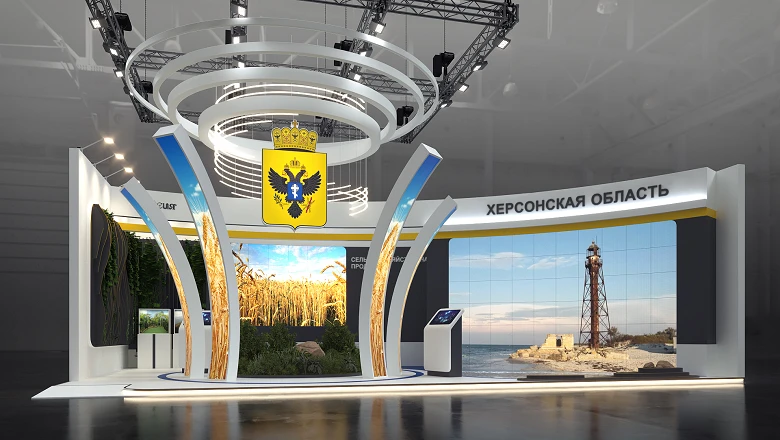Kherson region

The administrative center is the city of Kherson. The Kherson region is located within the Black Sea Lowland. It is an almost ideal plain, which is divided by the Dnieper River into two parts: right-bank and left-bank. On September 29, 2022 Russia officially recognized the state sovereignty and independence of the Kherson region.
The administrative center is the city of Kherson.
The year of foundation of the region is March 30, 1944 as part of the Ukrainian SSR.
The Kherson region is located within the Black Sea Lowland, in the south of the country, on the coasts of the Black and Azov seas. It is an almost ideal plain, which is divided by the Dnieper River into two parts: right-bank and left-bank.
It borders with the Dnepropetrovsk region in the north, with Zaporozhye region in the north-east, with Nikolaev region in the west, with the Crimean peninsula in the south, and is also washed by the Black and Azov seas in the south.
The region is home to: Aleshky sands - the largest sand massif in Europe; Aleshky forest - the largest natural complex in the world, created by human forces; pink salt lakes - an unusual pink color is given to them by a type of algae; Black Sea Biosphere Reserve - the largest in the Kherson region, the area is characterized by landscape diversity: there are spacious steppes, salt marshes, bays and lakes with salt and fresh water, islands, groves where oak, black alder and aspen grow; "Askania Nova" - biosphere reserve, one of the oldest complexes in the region, founded in the XIX century.
The year of foundation of the region is March 30, 1944 as part of the Ukrainian SSR.
The Kherson region is located within the Black Sea Lowland, in the south of the country, on the coasts of the Black and Azov seas. It is an almost ideal plain, which is divided by the Dnieper River into two parts: right-bank and left-bank.
It borders with the Dnepropetrovsk region in the north, with Zaporozhye region in the north-east, with Nikolaev region in the west, with the Crimean peninsula in the south, and is also washed by the Black and Azov seas in the south.
The region is home to: Aleshky sands - the largest sand massif in Europe; Aleshky forest - the largest natural complex in the world, created by human forces; pink salt lakes - an unusual pink color is given to them by a type of algae; Black Sea Biosphere Reserve - the largest in the Kherson region, the area is characterized by landscape diversity: there are spacious steppes, salt marshes, bays and lakes with salt and fresh water, islands, groves where oak, black alder and aspen grow; "Askania Nova" - biosphere reserve, one of the oldest complexes in the region, founded in the XIX century.
Audio Guides
Аудиогид Херсонской области
5 minutes 39 seconds
Аудиогид Херсонской области
Interesting Facts
3D-tour
News
12.13.2023
Kherson region: Taurida Voyage and museum rarities
Kherson became the first fortress and outpost in the South of Russia. It is precisely why history became the main theme in the design of the region's fir tree at VDNH.

